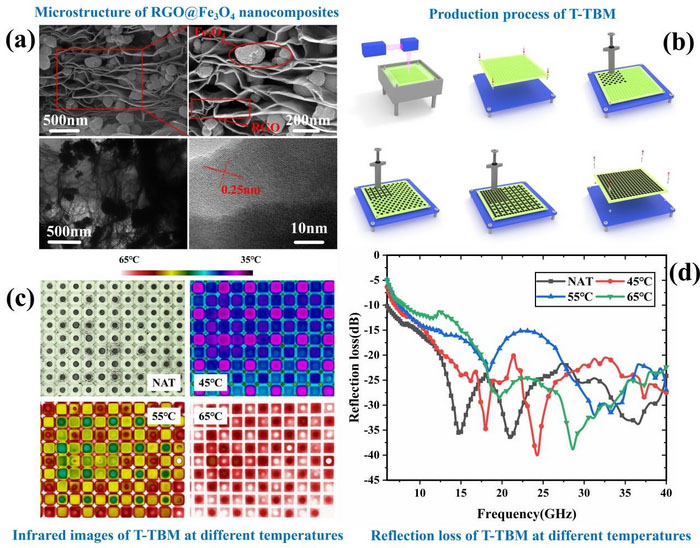| Nov 25, 2022 |
Thermo-tunable metamaterial with ultra-broadband absorption property
(Nanowerk News) A research team, led by Prof. Xiaoyong Tian in the State Key Laboratory for Manufacturing Systems Engineering at Xi’an Jiaotong University, has successfully manufactured a thermo-tunable broadband metamaterial (T-TBM) by 3D printing. The electromagnetic (EM) response of the T-TBM can be adjusted by controlling the solid–liquid phase state of different metamaterial units.
|
|
Unlike previously reported active control metamaterials, the absorption response of the T-TBM can be controlled by the change of temperature; furthermore, its performance of ultra-wideband absorbing does not change with the temperature.
|
|
The T-TBM can further promote the development of intelligent metamaterials and thermally controlled absorbers, according to the research team.
|
|
In this study (Engineering, "A Thermo-Tunable Metamaterial as an Actively Controlled Broadband Absorber"), the research team first prepared RGO@Fe3O4 nanocomposites by mechanical method.
|
 |
| (a) Microstructure of RGO@Fe3O4 nanocomposites; (b) production process of T-TBM; (c) infrared images of T-TBM at different temperatures; (d) reflection loss of T-TBM at different temperatures. (Image: Xiao-Chang Xing)
|
|
The characterization results of the RGO@Fe3O4 nanocomposites confirmed that the RGO@Fe3O4nanocomposites with sandwich structure were successfully prepared. Then paraffin-based composites (PD-Cs) were successfully prepared by adding 15 wt% RGO@Fe3O4 nanocomposites into paraffin with different phase transition temperatures.
|
|
It is shown that the PD-Cs have excellent electromagnetic loss performance with stable phase transition behavior (the phase transition behavior does not change with the addition of RGO@Fe3O4 nanocomposites). Based on the physical parameters’ test of the PD-Cs, the research team designed and optimized the structure of the T-TBM using ANSYS HFSS 16.0. In addition, the absorbing performance of the structure is simulated and tested.
|
|
The experimental results show that the T-TBM not only has the property of ultra-wideband absorbing, but also can shift the absorbing peak (reflection loss is less than −30 dB) at different temperatures. It should be noted that the change of temperature does not alter the ultra-wideband microwave absorbing performance of T-TBM. In the end, the team analyzed the micro-mechanism of thermo-tunable absorbing properties of the T-TBM.
|
|
The results show that the different micro-morphologies of the conductive network formed by RGO@Fe3O4 nanocomposites during the phase transition of PD-Cs play an important role in the thermal control mechanism of the T-TBM.
|

